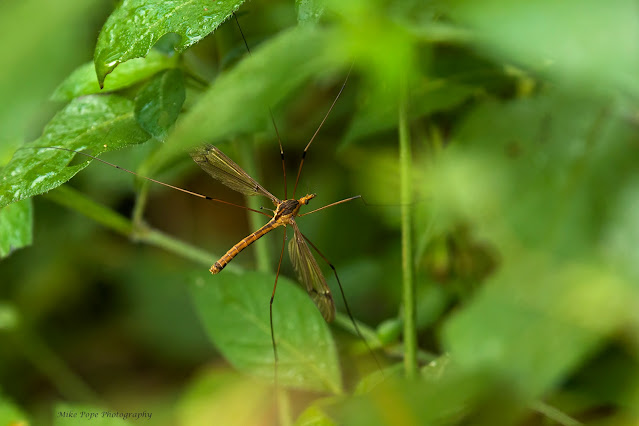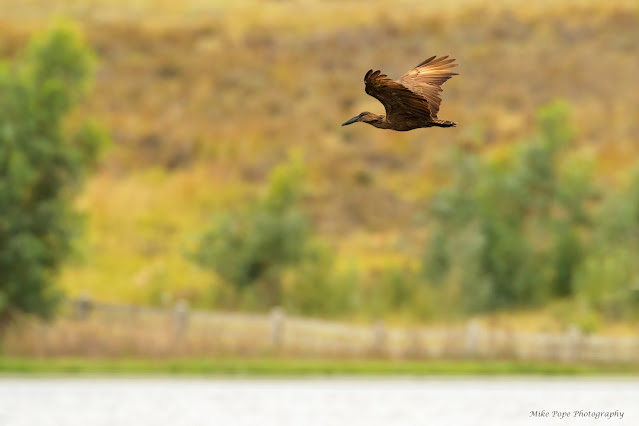25-27 March 2022 - Songimvelo Game Reserve
We were invited to spend the weekend conducting a bird survey with our good friends Lex and Lynn Hes in Songimvelo Game Reserve in the lowveld. We stayed at the luxury Humala River Lodge, on the banks of the Komati River.
Songimvelo, at 48000 hectares, is the largest provincial nature reserve in Mpumalanga. The landscape ranges from savanna plains to high grassy mountains and rolling hills and these create some dramatic scenery with the Barberton/Bulembu mountains, deep valleys and gorges dropping into the Komati River valley. The flora alone, with 1,400 species is a huge attraction for the budding botanists. However, we were there for the birds.
My wife and I left late Friday afternoon and drove all the way to Songimvelo in heavy rain - not an encouraging start. We were met at the gate by our guide JP, dropped our car (no private vehicles allowed in the reserve) and had a slow 45-minutes in the rain to the Lodge. Lex and Lynn were already here and we had a good catch-up over dinner where we planned the weekends activities with JP.
Lex and I were up early on Saturday morning and met JP for coffee at the Lodge. It was overcast and dull, but the rain had thankfully abated during the night. We opted to explore a few habitats during the morning. Our wives elected to stay at the Lodge and enjoy a Spa day.
Just outside the Lodge, a lone Giraffe with an Oxpecker sitting sentinel on it's tuft.
 |
| Cape Giraffe (Giraffa c. giraffa) with Red-billed Oxpecker (Buphagus erythrorhynchus) |
A little further on, a male Namaqua Dove which was a first record for the reserve
 |
| Male Namaqua Dove (Oena capensis) |
We stopped at small pan to walk and were entertained by a few Croaking Cisticola's amongst many other birds seen.
 |
| Croaking Cisticola (Cisticola natalensis) |
Not much further, we stopped for African Hoopoe, as our list slowly grew
 |
| African Hoopoe (Upupa africana) |
The scenery was pretty spectacular with low clouds and the mountain backdrops
 |
| Mountain backdrop |
 |
| Dawn colours |
We checked all the Pipit's, but only African was confirmed
 |
| African Pipit (Anthus cinnamomeus) |
We found our way down to a different section of the Komati River and walked along the bank, ticking off Water Thick-knee and then spending some time with a Brown-throated Martin breeding colony in one of the steep banks
 |
| Brown-throated Martin (Riparia paludicola) |
There was one dark Martin amongst all the regular birds which turned out to be the dark form of Brown-throated and is normally found south of their regular range. It was a first for me
 |
| Dark form Brown-throated Martin (Riparia paludicola) |
Whilst watching the Martin's, I looked up and saw a Giraffe watching me from above the Martin's bank
 |
| Cape Giraffe (Giraffa c. giraffa) |
On the way out, we had an obliging Zitting Cisticola
 |
| Zitting Cisticola (Cisticola juncidis) |
Then Bushveld Pipit
 |
| Bushveld Pipit (Anthus caffer) |
and Lazy Cisticola in the same area
 |
| Lazy Cisticola (Cisticola aberrans) |
Along with a few Little Bee-eater's
 |
| Little Bee-eater (Merops pusillus) |
A Giraffe scape on route to the Lodge
 |
| Cape Giraffe (Giraffa c. giraffa) |
A Rock Monitor was lazing on the rocks in the car park when we arrived back at the Lodge
 |
| Rock Monitor (Varanus albigularis) |
After lunch, I had a quick walk with Lex and we added Half-collared Kingfisher and White-throated Robin Chat
 |
| White-throated Robin-Chat (Cossypha humeralis) |
Along with Kurrichane Thrush
 |
| Kurrichane Thrush (Turdus libonyanus) |
We had an hour before the afternoon/evening drive, so I chilled on the patio of our tent and had the most amazing view of a female Finfoot as it drifted past me, very close to the banks of the fast flowing Komati River. No chance for any pictures, so just soaked it up through my bins.
We then met up with JP and headed off to a different area for the afternoon drive. First up was a juvenile African Cuckoo-Hawk which had us scratching our heads for some time. It was quite some way off, but did pass by overhead against a dull and overcast sky. I hadn't seen one of these in years
 |
| Juvenile African Cuckoo-Hawk (Aviceda cuculoides) |
Next up a family of Yellow-throated Longclaw, unfortunately against the light
 |
| Yellow-throated Longclaw (Macronyx croceus) |
and then a few of the diminutive and colourful Little Bee-eaters in gorgeous afternoon light
 |
| Little Bee-eater (Merops pusillus) |
We stopped for sundowners and enjoyed the short but impressive sunset
 |
| Lone Tree Sunset |
After sundowners, we headed back to the Lodge, finding only a female European Nightjar on the track and hearing a Fiery-necked in the distance. Overall a fairly productive day, given the crappy weather.
Of course, I did also record some invertebrates during the game drives and walks; a probable White-tip Grassland Antlion
 |
| White-tip Grassland Antlion (Macronemurus tinctus) |
A Babault's Zebra Blue
 |
| Babault's Zebra Blue (Leptotes babaulti) |
Dotted Pierrot
 |
| Dotted Pierrot (Tarucus s. sybaris) |
Pink Cupreous Ash Blue
 |
| Pink Cupreous Ash Blue (Eicochrysops messapus mahallakoaena) |
and Striped Sandman
 |
| Striped Sandman (Spialia ferax) |
Whilst around the Lodge, I had Marsh Hillside Brown
 |
| Marsh Hillside Brown (Stygionympha curlei) |
And both male and female Dancing Jewel which is a Damselfly, despite looking more like a Dragonfly
 |
| Female Dancing Jewel (Platycypha caligata) |
 |
| Male Dancing Jewel (Platycypha caligata) |
Red-veined Dropwing
 |
| Red-veined Dropwing (Trithemis arteriosa) |
and a Damselfly which I still need to ID
 |
| Damselfly sp. |
The staff had setup our dinner table outside next to the river and a roaring fire and we had another enjoyable evening, this time under the stars.
On our last morning, we left early to explore a gorge and forest for some diversity. We didnt stop to often, as we wanted to have as much time as possible in this area. After a 90-minute drive we finally reached our destination - had a coffee break and then walked and listened and added at least 10-12 species to our final list.
Forest birds are generally not easy and normally only give fleeting views before diving back into cover, but I did manage to get images of Terrestrial Brownbul
 |
| Terrestrial Brownbul (Phyllastrephus terrestris) |
and Yellow-breasted Apalis
 |
| Female Yellow-breasted Apalis (Apalis flavida) |
We walked on the Elephant trails in the forest and I also added a couple of invertebrates. I suspect this is a Goldtail
 |
| Goldtail (Allocnemis leucosticta) |
But am unsure of the ID of this Damselfly
 |
| Damselfly sp. |
or this insect
 |
| Insect sp. |
Back at the car, I had a Southern Pied Piper and by now it was time to head back to camp
 |
| Southern Pied Piper (Eurytela hiarbas angustata) |
A few African Firefinch's looked like Christmas Tree decorations
 |
| African Firefinch (Lagonosticta rubricata) |
And just before camp we had a Brown Snake Eagle overhead
 |
| Brown Snake Eagle (Circaetus cinereus) |
After breakfast, it was time to pack and together with JP head back to the main gate where we transferred our luggage to our respective Hilux's. All too soon, our enjoyable weekend was over
After consolidating our list, we recorded 126 species for the weekend which given the weather and the habitats we could get to, was not too bad at all.




















































































